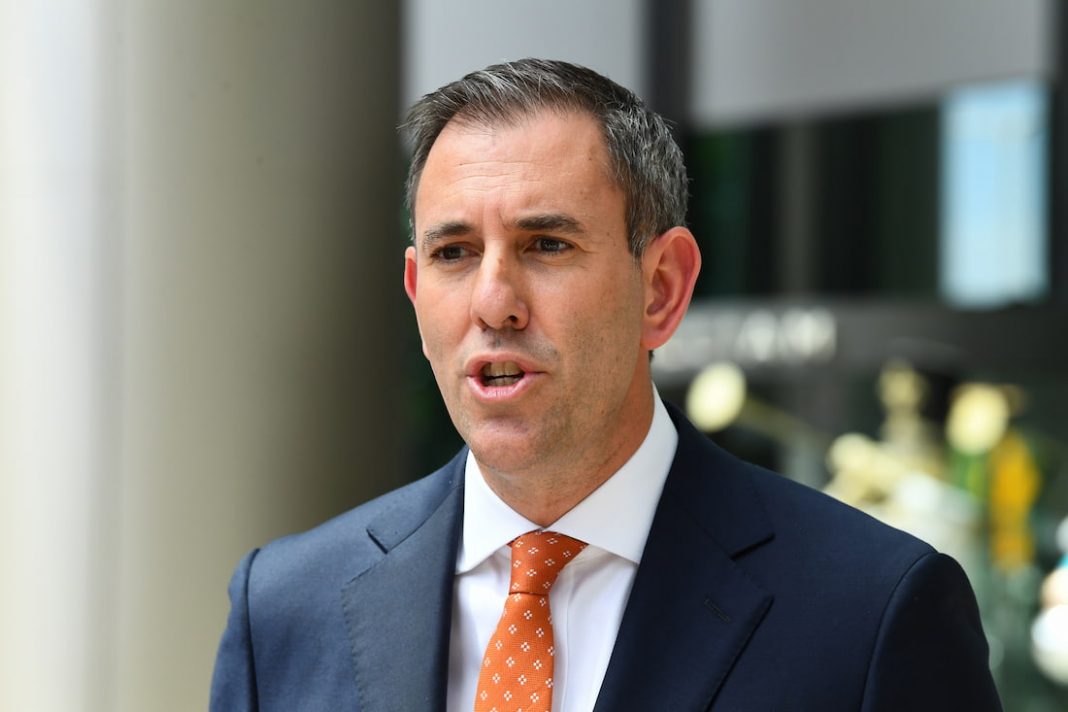State and territory treasurers are angling to lock in their GST top-ups for good in exchange for providing more help to fund the National Disability Insurance Scheme.
The fate of GST deal was a core focus of the treasurers’ meeting in Brisbane on Friday, with states hoping to make the temporary top-up to GST payments – which is due to expire in 2027 – a permanent fixture.
The “no worse off guarantee” was set up in 2018 after a deal was struck under the former coalition government with Western Australia.
States and territories collectively stand to lose about $5 billion a year once it expires, with that sum expected to go up each year.
A statement issued after the meeting showed a partial or temporary extension was discussed with federal Treasurer Jim Chalmers, but all state and territory treasurers are insisting it is made permanent in the upcoming mid-year budget update.
While a deal was not reached at the meeting, Treasurer Jim Chalmers went in open to talks.
“We do recognise the pressures on some state budgets and territory budgets, and we ask our colleagues to recognise the pressure on the Commonwealth’s budget as well,” he said on Friday.
“It’s not unprecedented, it’s not surprising, it’s not especially troubling that states and territories would like more money from the Commonwealth – that’s a story as old as Federation itself.”
State and territory treasurers want the GST issue squared away before considering any proposals for a more sustainable funding model for the NDIS, which is expected to be discussed at national cabinet next week.
Queensland Premier Annastacia Palaszczuk said she did not want to see any decline in the GST revenue her state received.
“What’s at stake from 2026 onwards is up to a billion dollars a year to the Queensland government … at national cabinet I’ll be fighting for our fair share of GST,” she said on Friday.
South Australia Premier Peter Malinauskas said on Thursday the original deal was done to “appease Western Australian political considerations” and it “dudded South Australia”.
“It has been a dud deal and it is now coming at us like a freight train in terms of its impact on the South Australian budget, which would mean less money to invest in the things that we care about, particularly health and housing.”
The mid-year update on the federal budget – due later this month – is expected to show a substantial improvement to the bottom line, according to Dr Chalmers, but not a forecast for a second surplus.
Yet others expect a second year in the black for 2023/24, including Rich Insight economist Chris Richardson.
He is forecasting a $10 billion surplus forecast for 2023/24 as it continues “raining dollars”.
He also anticipates deficits that are each more than $20 billion smaller than Treasury’s May forecasts, starting at $11 billion in 2024/25, $13 billion in 2025-26, and $7 billion in 2026/27.
In 2022/23, the first surplus in 15 years was posted, and at $22 billion, it was $18 billion bigger than expected.
Mr Richardson said the make-up of the surplus was evolving, with personal and spending taxes making a larger contribution than profit taxes now that commodity prices have stalled.



